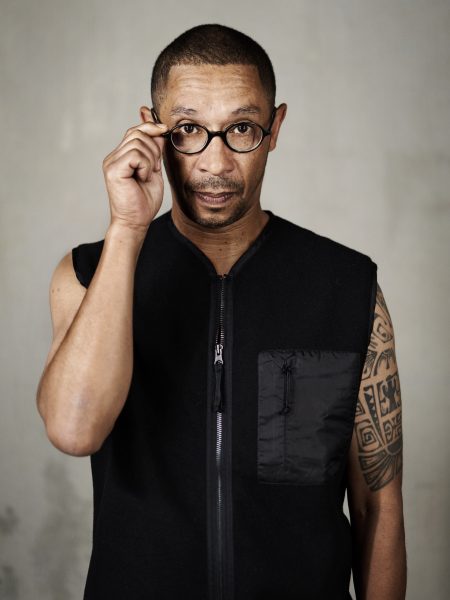In 1984, hip hop culture made its first forays into Europe. France discovered hip hop on television thanks to Sidney, and breakdance began to be seen in train stations and no-man’s lands around Paris. That same landmark year, Iffra Dia, inspired by the message of hope and unity associated with the early days of hip-hop, joined Black Blanc Beur, the first professional hip hop dance company in France. Fourteen years before the France – Brazil World Cup Final, he participated in the emergence of b-boying and helped establish its legitimacy on stage, all the while asserting a vision of unconstrained dance through the singularity of his evolving style and the freedom it entailed.
Iffra Dia’s gestural approach has evolved over the course of encounters and performances through empirical confrontations with jazz, upright dance moves, and later on with the language of contemporary dance. This allowed him to build his own vocabulary and a personal vision of movement. Bodily expression became the vehicle for the desire to steer away from an imposed sense of uprootedness and reconnect with his intangible heritage. The choreographer and dancer, who defines himself as a “culture broker,” brings a unique, humanist worldview to dance, focusing on introspection, the moment, and sharing.
Thirty years after his debut, Iffra Dia changed sides and created a triptych aimed at identity building. Hors jeux! (2011) stages a deconstruction of the choreographer’s career, turning transgression and apprenticeship into an ever-renewed potential of the body. The construction of individuality collides with otherness and collectivity in Issue de secours (2013) and resonates in 3.0 (2017), a feminine trio exploring the other as a mirror reflection that helps combat insularity.
In 2019, Iffra Dia presented Pasacaille, a duo with the violinist Fabien Boudot at a crossroads between baroque music and hip hop dance. In the continuity of the performative conference From Scratch (2019), Iffra’s participative project Post Danse (2021) questions the relationship between tradition and the present time by focusing on digital culture’s influence on dance.



